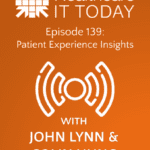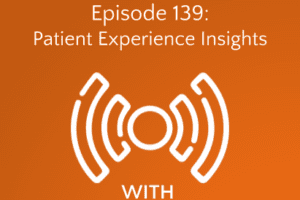The following is a guest article by Moliehi “Mo” Weitnauer, Chief Product Officer at MRO
Providers are witnessing an explosion in health plan requests for medical records. In some regions, request volumes are up by 30 percent over last year. Reasons for the spike include upticks in claims denials, more risk adjustment reviews, and increases in mandatory HEDIS reporting. No doubt these are topics that we’ll be discussing at the MRO booth (#213) at the upcoming HFMA conference.
Particularly for risk adjustment (RA) reviews, even the slightest gaps in reporting leaves health plans at risk for drops in quality ratings and subsequent revenue loss. And requests for patient data are predicted to intensify as health plans work to reduce per-member/per-month costs, earn higher STAR ratings, and meet the CMS 2030 value-based care goals.
Furthermore, the 21st Century Act opens the door for greater availability to clinical data among patients, providers, and other requesters such as payers. Non-health insurers and life sciences companies also recognize the value of clinical data and are requiring greater levels of access to power their applications and processes.
All the while, health systems must manage this growing demand while also remaining focused on accuracy and disclosure integrity for the patient data they protect. Healthcare stakeholders need the patient data that healthcare providers possess. But the administrative costs for providers to share this information keep escalating. Therein lies the rub.
The healthcare industry’s steady progress toward interoperability and health information exchange promises to improve data exchange to address these challenges. Technological advancements will relieve the administrative burdens associated with medical record requests. But the industry isn’t there yet and significant gaps remain. This article introduces new technology solutions to solve the “too many records, too little time” conundrum with a primary focus on today’s health plan requests.
Innovate Payer-Provider Data Exchange
Several technology solutions have emerged as effective ways to ease manual interventions and address volume spikes until such time as a fully digital exchange is established between providers and health plans. New and niche, these applications decrease administrative burdens and reduce operational costs in departments such as health information, business office, and denial management. Here is one example of how payer exchange is being automated today.
Digitized release of information technology accelerates the processing of health plan requests and makes it easier to manage the rising volume of work in both health information (HI) and IT. Solutions are designed to remove the manual burden from staff and automate four FTEs annually in HI departments. A combination of tools are used collectively to accomplish payer exchange.
- Connections are built with health plans to receive requests electronically. For example, MRO already engages with a broad network of payers for data exchange and is easily able to contract with new payers and other requestors.
- Medical record requests are digitized, and specific data requirements are tagged. Requests are then electronically communicated directly to the provider organization’s EHRs and other systems.
- Automated chart retrieval is performed at scale, leveraging modern HL7 FHIR APIs.
- The specific, requested data is intelligently pulled from the provider organization’s systems to fulfill the request—including over 200+ EHRs using MRO’s proprietary technology.
- Payer exchange technology includes a developer website and sandbox to comb through current API specifications and test payloads against available endpoints to lessen the burden on both providers’ and payers’ IT teams.
Throughout the entire process patient privacy and medical record request accuracy are essential.
Keep Tabs on Privacy, Accuracy, and Turnaround Time
Automated workflows like the one described above is designed to maximize quality while optimizing efficiencies. The definition of quality here includes four specific pillars.
- Patient privacy. Exchange only the correct and properly authorized data.
- Data quality. Test and validate to ensure output meets quality standards, and records can be pulled and exchanged at scale. This includes accurate patient matching across providers.
- Risk adjustment scores. Apply technology to reduce human errors and increase provider reimbursements.
- Metrics. Provide full transparency into key metrics such as requesters, turnaround time (TAT), patient match rates, projects, and charts at risk.
These four pillars work together to support improved communications with health plans as the provider organization fully digitizes their payer exchange.
Conclusion
Health plans typically request records required to process or resolve claims, perform risk adjustment reviews, and comply with HEDIS reporting requirements. The purpose is justified. It’s the recent rise in medical request volume that has created significant administrative burden and cost for healthcare providers.
Now is the time for providers to seriously consider automating their procedures and processes for fulfilling health plan medical record requests. Volumes are rising, and thankfully help is at hand.
 About Moliehi “Mo” Weitnauer
About Moliehi “Mo” Weitnauer
Mo Weitnauer is the Chief Product Officer at MRO where she is responsible for product strategy and roadmap. With a master’s degree in Health Policy and Management from Harvard T.H. Chan School of Public Health, Mo formerly served in leadership roles for Cotiviti, FinThrive, and McKinsey & Company.













